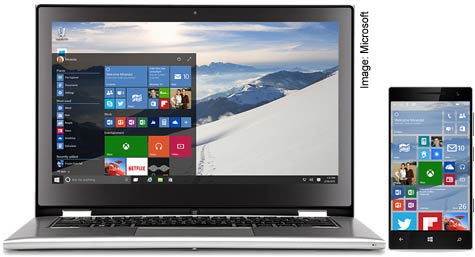This week, a smartphone operating system report was issued by IDC that showcased that even though Microsoft sold more Windows phones last year, currently shipping “only” 35M a year, it was the junior player in a massive mobile market. This is still more smartphones than Apple sold in 2007, 2008, or 2009, yet some are concluding that Windows Phone 10, which hasn’t even shipped yet, is stillborn. A lot of folks thought the same thing about the iPhone, and look how that turned out.
Let’s talk about the danger of drawing trends from single data points, particularly when trend lines point in the opposite direction.
The iPhone’s Formula
When the iPhone was launched, the smartphone market was mostly business phones and the vendors in power were Palm and RIM (later renamed BlackBerry). This was a business-oriented market and a lot of folks thought that Apple would crash and burn when it brought out the iPhone. Most of those folks were in the cell phone market at the time. How could a company known mostly for being a poor underdog to Microsoft build a successful phone? The iPhone was branded a failure before it launched. Apple’s first attempt at a phone, the Rokr, was an abysmal failure.
I recall that the iPod went through the same birthing process; it was a $450 music player in a world dominated by products under $200, and it was far smaller. Turns out, price and size were secondary to customer experience and Apple stole the market. As a side note, the iPod was launched in 2002 and it wasn’t until late 2006, or four years later, that Apple sold more iPods than Microsoft now sells Windows phones.
Apple simply repeated this formula with the iPhone and again went after the premium space. Google basically created a clone of iOS and gave it away for free in what was clearly a value play. Entering after Apple, with literally no hardware experience at all, it now has around 80 percent of the market (Apple has around 17 percent of the market). But that 17 percent is virtually all premium business, and since Google gives its OS away for free, Apple clearly is vastly more profitable with what is a vastly smaller user base.
So, on paper, while the overall market numbers would favor Google, the profit that Apple makes off of a smaller base gives it the more successful business. The other lesson here is that both Google and Apple, starting with nothing, were able to dominate what was an established market and were successful in pulling customers from Palm, BlackBerry, and even Nokia in order to get to dominance.
The problem with projecting success or failure before a product exists is that it is all a guess. Even if you did focus groups, you’d have to use mockups and it is really hard to get an accurate read with mockups.
Windows Phone’s Problems
The big problem with Windows Phone is the apps, but with sales of around $35M a year and far less choice, an application vendor could make more money with a similar app on the Windows, or BlackBerry, platform than Android. This is because Android tends to preset the mind of the buyer on free apps and even the freemium model hasn’t worked particularly well. Apple does move a lot of premium apps on iOS, but the marketplace is so crowded that it is often hard to get through the noise to find a buyer.
Let’s look at the OS stats from 2013. Both Android and Apple had 800K apps, but supporting the revenue advantage of being on a platform tied to customers who pay for apps, Apple took in over three times the revenue on apps that Google did. So an app on iOS is worth three times what an app on Android is worth. Windows Phone has one quarter the number of apps, suggesting that every app potentially has four times the visibility. With four times the visibility, and one-fourth the market share, if everything else was equal, that should result in similar revenue potential for an app developer on iOS and Windows Phone, and potentially far more than Google, given that the dollars per app are far lower.
Wrapping Up: Lies, Damn Lies and Statistics
In the end, we should learn from all of this that while calling something dead may make for great page views, you need to do some analysis to get to that conclusion. Windows Phone, while clearly having a smaller market share, is growing. And the value proposition for apps may be second only to Apple, suggesting potential for an upset. Next week at Mobile World Congress, Microsoft could have some surprises for us and, really, we’ll need to see what Windows 10 looks like on a phone before coming to any conclusion about the platform’s future.
Microsoft always had the resources to win in this market, it just never applied them. Satya Nadella is far more like Bill Gates than his predecessor and he seems to have a clue, so this is more likely the beginning than the end.
The danger here is that making a prediction without enough information can lead to the wrong conclusions. I’m not saying Windows 10 on a phone will be a success. I’m saying that other successes started with far less and that Microsoft is executing particularly well now, which suggests it won’t be a failure.
Rob Enderle is President and Principal Analyst of the Enderle Group, a forward-looking emerging technology advisory firm. With over 30 years’ experience in emerging technologies, he has provided regional and global companies with guidance in how to better target customer needs; create new business opportunities; anticipate technology changes; select vendors and products; and present their products in the best possible light. Rob covers the technology industry broadly. Before founding the Enderle Group, Rob was the Senior Research Fellow for Forrester Research and the Giga Information Group, and held senior positions at IBM and ROLM. Follow Rob on Twitter @enderle, on Facebook and on Google+




